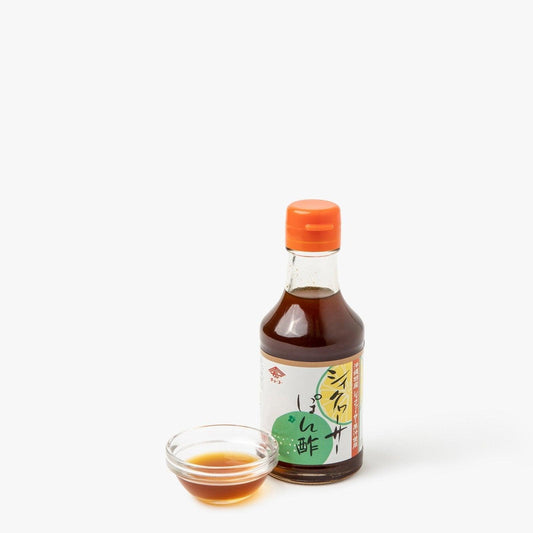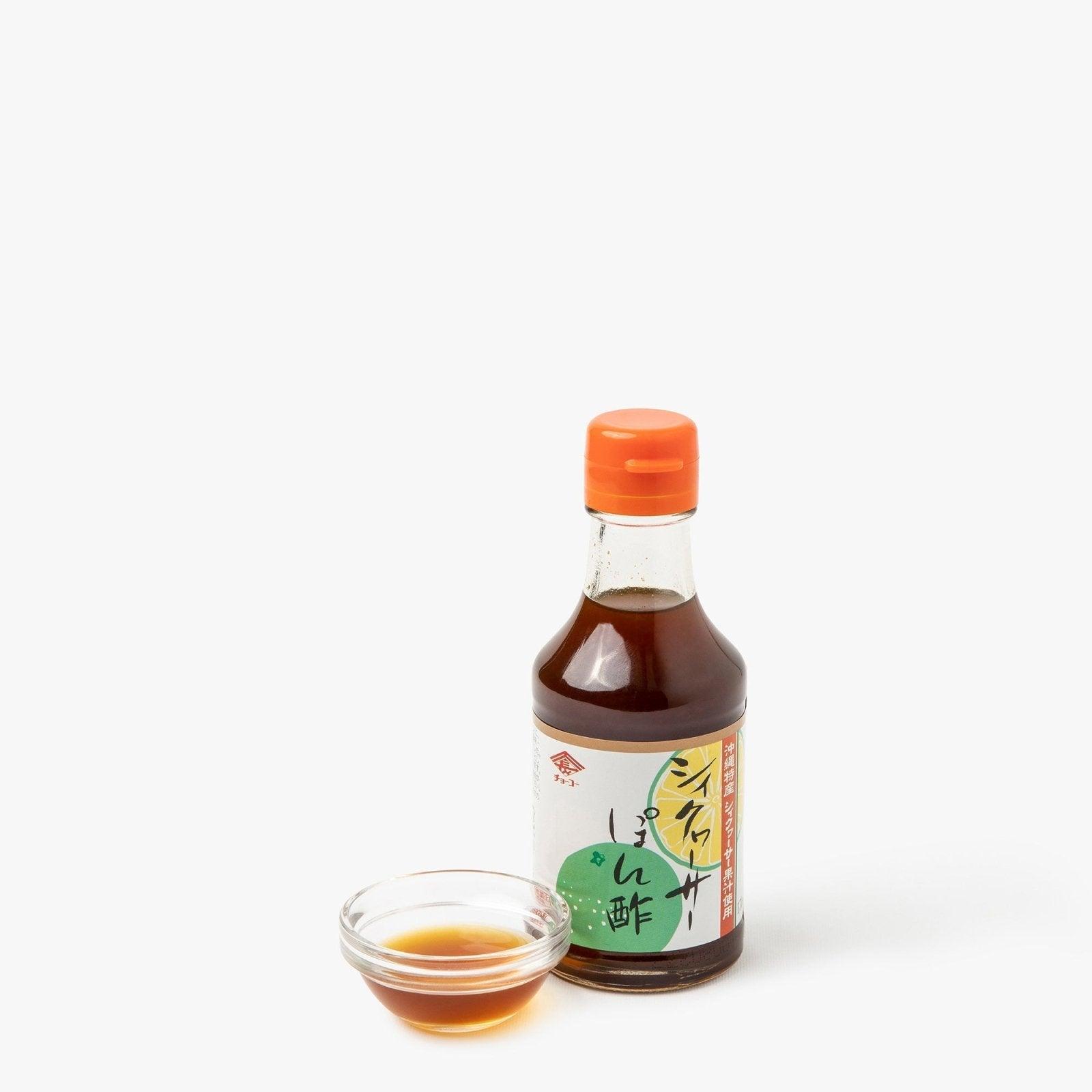Find out more about ponzu sauce
What is ponzu sauce?
Japanese ponzu sauce is a seasoning based on soy sauce, citrus juices such as yuzu or lemon, rice vinegar, mirin and sometimes dashi for a deep umami taste.
Used in Japanese cuisine, it accompanies meats, fish, shabu-shabu and vegetables. Its balance of acidity and umami makes it a prized condiment in Japanese grocery stores.
Where does ponzu sauce come from?
Ponzu sauce has its origins in Japanese cuisine, but its history is influenced by cultural exchanges with the West.
The word "ponzu" comes from the Dutch "pons", which once referred to a citrus-based alcoholic beverage introduced to Japan by Dutch traders in the 17th century. The suffix "-zu" (酢) means "vinegar" in Japanese, reflecting its tangy taste.
Originally, ponzu was simply a mixture of citrus juices (yuzu, sudachi, kabosu) and vinegar. Later, the Japanese added soy sauce, mirin and dashi to create ponzu sauce as we know it today.
What's the difference between soy sauce and ponzu sauce?
Soy sauce: Made from fermented soybeans, wheat, water and salt, it has a pronounced umami and salty flavor. It is used as a basic seasoning in Japanese cuisine.
Ponzu sauce: A blend of soy sauce and citrus juice (often yuzu or sudachi), ponzu sauce is lighter, tangier and more refreshing. It is often used as a sauce for sashimi, grilled meats and salads.
What Japanese dishes does ponzu sauce go into?
Shabu-shabu: Used as a dipping sauce for thinly sliced meat and boiled vegetables.
Tataki: Adds a tangy touch to beef or tuna tataki, often with onions and ginger.
Sashimi: A lighter alternative to soy sauce, especially for white fish.
Yakitori and grilled meats: Enhances kebabs and grilled meats with a zesty note.
Japanese salads: Use as a dressing for seaweed, daikon or cucumber salads.
Gyoza and tempura: Can replace traditional sauce for a livelier flavour.
What are the health benefits of ponzu sauce?
Low-calorie: Compared to other sauces, it's light and low in calories, ideal for a balanced diet.
Rich in antioxidants: Thanks to citrus fruits (yuzu, sudachi, etc.), it contains flavonoids and vitamin C, which help strengthen the immune system.
Aids digestion: its acidity stimulates the production of digestive enzymes, facilitating nutrient absorption.
Less salty than pure soy sauce: Although it contains soy sauce, mixing it with citrus juice reduces the sodium content.
Refreshing effect: Its tangy taste helps lighten high-fat dishes and promotes better digestion after a hearty meal.
How to soften the acidity of ponzu sauce?
If ponzu sauce is too acidic for your taste, here are a few tips for sweetening it while preserving its aromatic balance:
- Add a little mirin or honey: Mirin (Japanese sweet sake) or a touch of honey adds a natural sweetness that counterbalances the acidity.
- Stir in dashi A light broth made from kombu or dried bonito adds umami and mellows the flavor.
- Mix with soy sauce A higher proportion of soy sauce reduces acidity and enhances depth of flavor.
- Add a little sesame oil A few drops of sesame oil add roundness and sweetness.
- Dilute with water or broth: This reduces the overall intensity without altering the taste.
How to make homemade ponzu sauce
Ingredients:
- 100 ml soy sauce
- 50 ml citrus citrus juice (yuzu, sudachi, lemon or orange)
- 30 ml of mirin (or a tablespoon of honey for an alcohol-free version)
- 1 tablespoon rice vinegar
- 1 piece kombu (5 cm)
- 5 g dried dried bonito (katsuobushi, optional for extra umami)
Preparation:
- Mix the soy sauce, citrus juice, mirin and rice vinegar in a bowl.
- Add the kombu and leave to infuse in the fridge for at least 6 hours (or ideally overnight).
- If you're using dried bonito, add it after 2 hours of infusion, then filter the sauce before use.
- Remove the kombu and store the ponzu sauce in an airtight bottle in a cool place.
What is the shelf life of ponzu sauce after opening?
After opening, ponzu sauce can be stored for around 2-3 months in the refrigerator, provided it is kept in an airtight bottle to prevent oxidation. The freshness of the citrus fruits (yuzu or others) may diminish over time, but the blend of soy sauce and other ingredients such as vinegar and mirin contribute to its long shelf-life.
However, it is advisable to check the sauce regularly to ensure that it has not lost its flavor or developed signs of mold. If it appears spoiled, it's best not to use it.






























